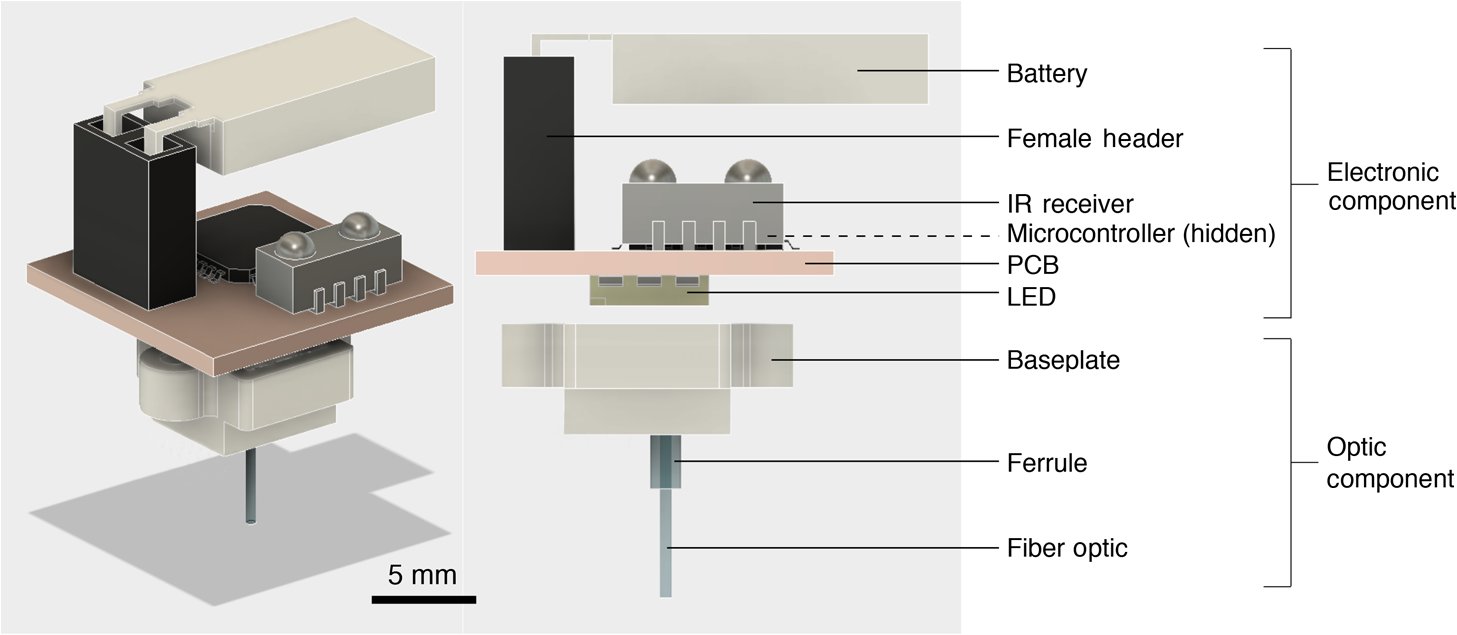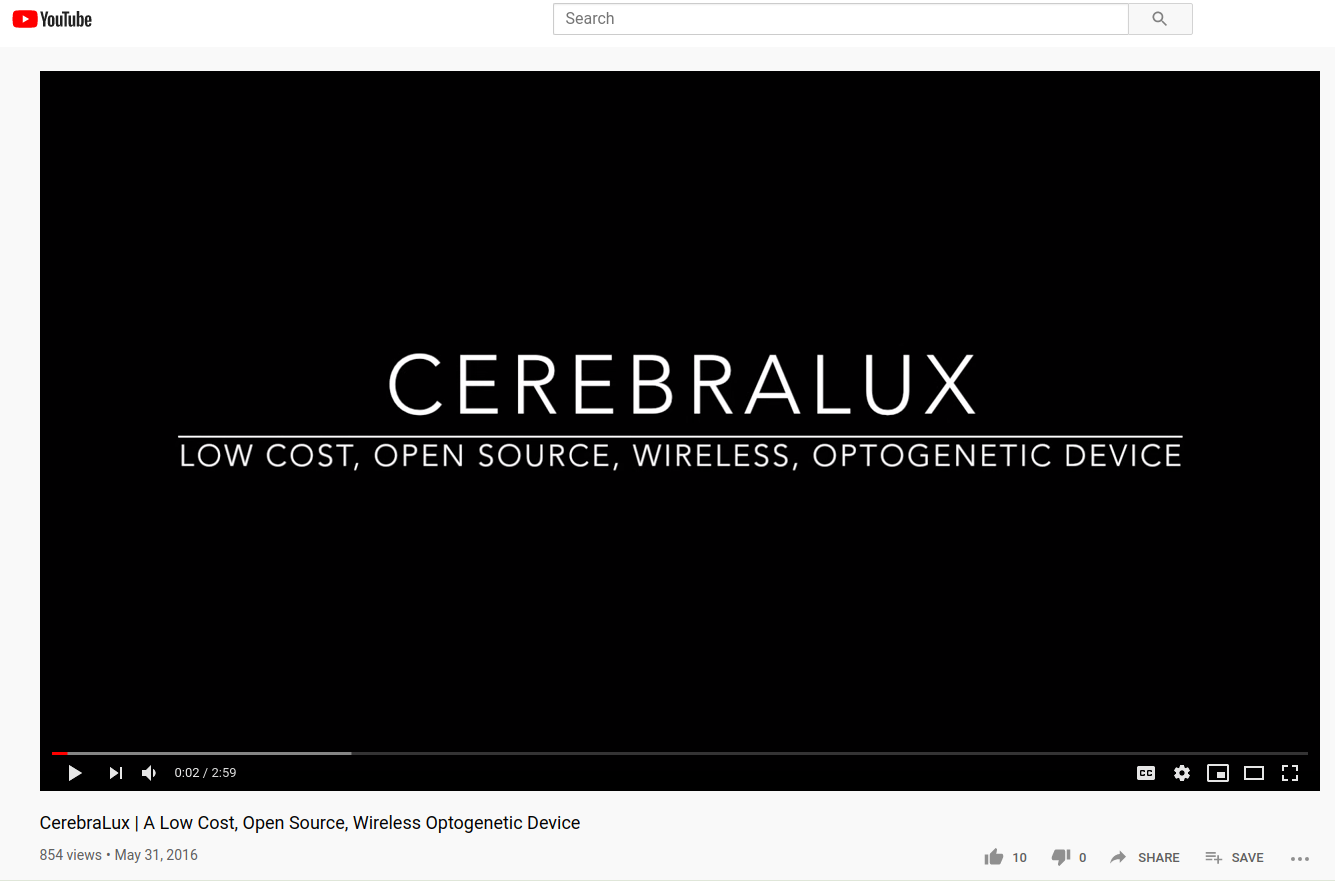CerebraLux
This week we want to shed some light on a project from Robel Dagnew and colleagues from UCLA called CerebraLux, a wireless system for optogenetic stimulation.
Optogenetic methods have been a crucial tool for understanding the role that certain neural cell populations have in modulating or maintaining a variety of behaviors. This tool requires a light source to be passed through a fiber optic probe, and in many experimental setups this is achieved through a long fiber optic cable to attach the light source to the probe. This long cable can impose limitations on experiments where animals are behaving freely around behavior chambers or mazes. One obvious solution is to deliver light via a wireless controller communicating with a headmounted light source, but existing systems can be cost-prohibitive or to build in a lab requires access to specialized manufacturing equipment. To address the need for a a low-cost wireless optogenetic probe, Dagnew and colleagues developed CerebraLux which is built using off-the-shelf and accessible custom parts. This device consists of two major components: the optic component which features a milled baseplate capable of holding and connecting an optic fiber and LED (a part of the electronic portion); and the electronic component which features a custom-printed circuit board (PCB), lithium battery, IR receiver, LED, and magnets to align and connect the two components of the device. The device is controlled via a custom GUI (built with the TkInter Python 2.7 library) which sends pulses to the device via an Arduino Uno. More details about the build of these components and the process for communicating with the device via the GUI are available in Dagnew et. al. The CerebraLux design and operations manual, which includes access to the 3D design files for the milled parts, the print design for the PCB, and code for communicating with the device, is available in the appendix of the paper, while the code for the GUI is available from the Walwyn Lab website. Be sure to check out the paper for information about how they validated the device in vivo. The cost of all the component parts (as of 2017) comes in just under $200, providing to be a cost-effective solution for labs seeking a wireless optogenetic probe.
This research tool was created by your colleagues. Please acknowledge the Principal Investigator, cite the article in which the tool was described, and include an RRID in the Materials and Methods of your future publications. RRID:SCR_021570
Read the Paper
Read more about CerebraLux in Neurophotonics and find access to all the necessary files and code there!
CerebraLux on YouTube
Watch this short YouTube video about the project and how it was developed!
Check out projects similar to this!







